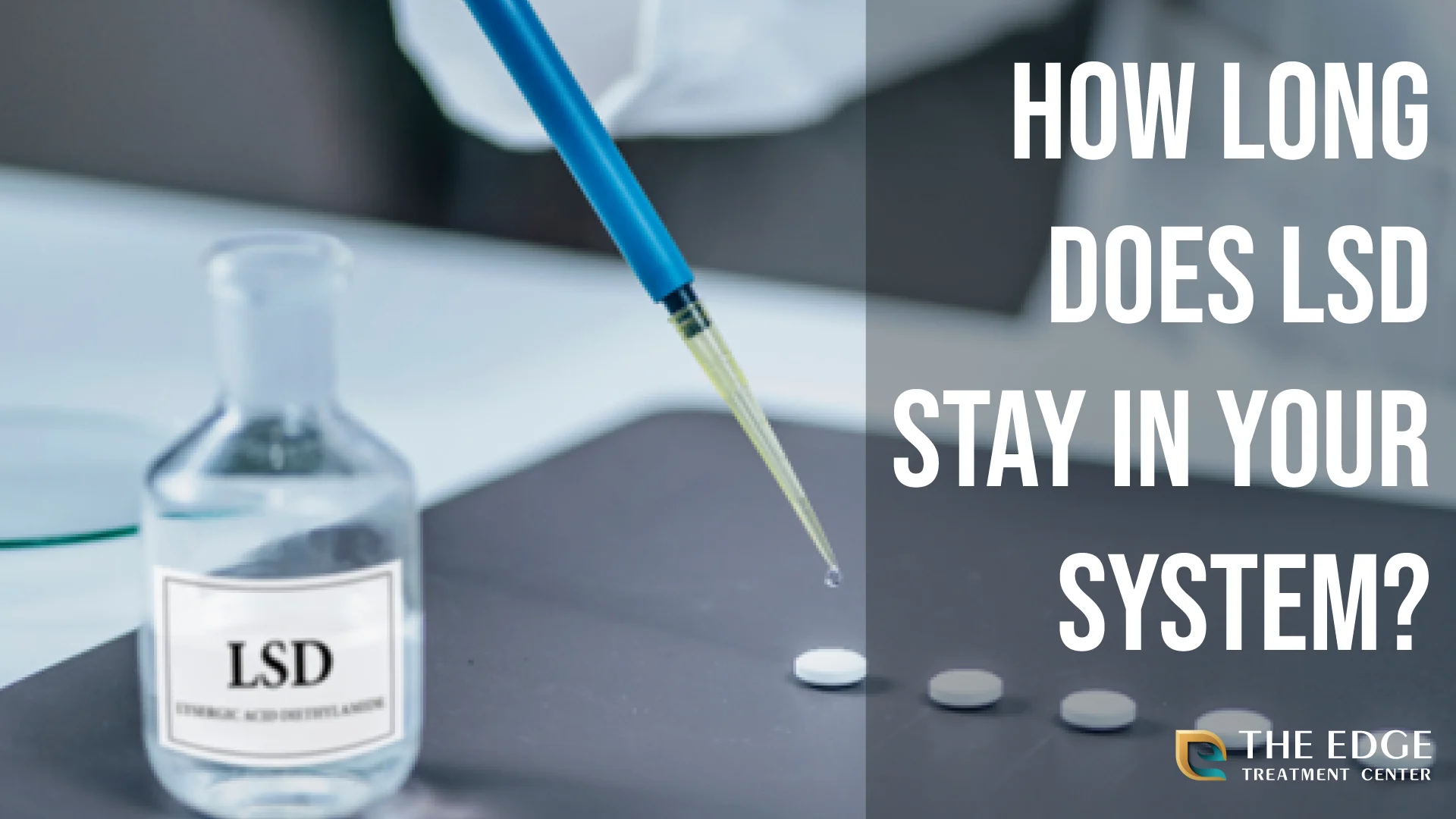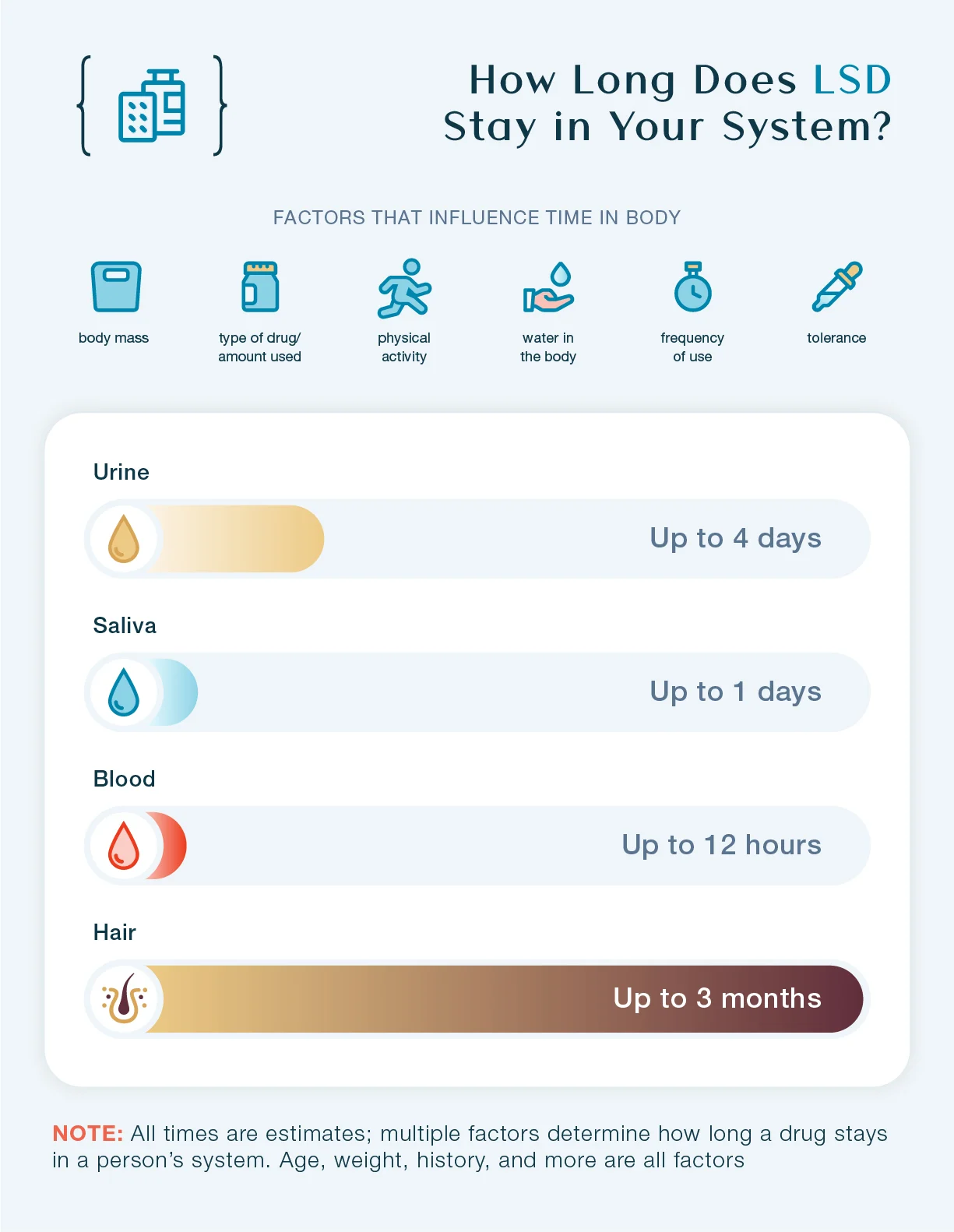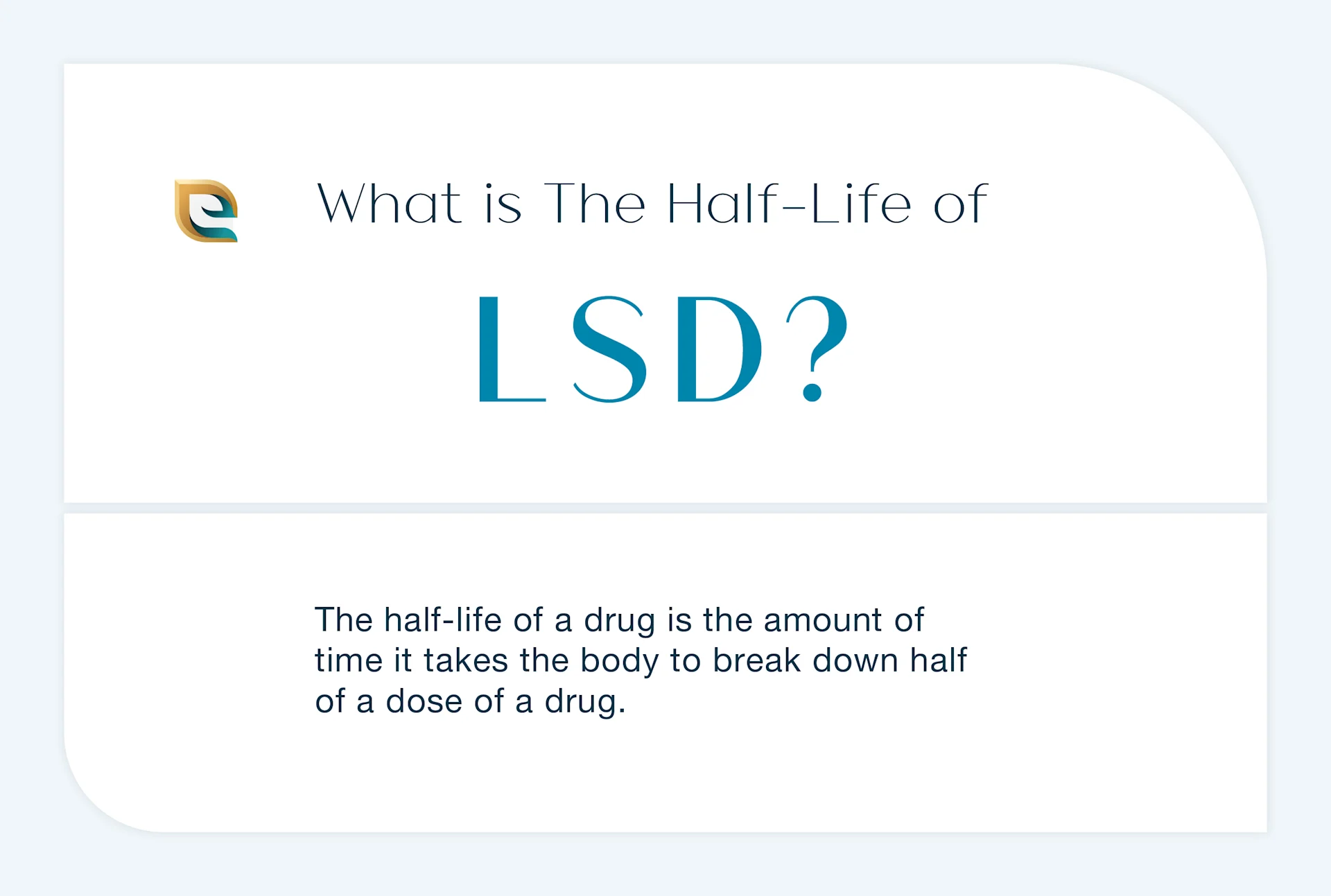Drug and Alcohol
How Long Does LSD Stay in Your System?

Want to know how long LSD stays in your system? The answer can be surprising. Learn more about LSD, drug tests, and hallucinogenic drug abuse.
In recent years, there has been a rise in LSD abuse in the United States, particularly among young adults. One factor contributing to the rise in LSD abuse is the increased availability of the drug.
LSD can be manufactured relatively easily using basic chemical processes and can be purchased online through the dark web or on social media platforms. Additionally, there has been an increase in the number of people producing and distributing LSD, often using sophisticated methods to evade law enforcement.
However, LSD abuse can have serious consequences. The drug can cause hallucinations that are difficult to control, leading to potentially dangerous situations. It can also cause psychosis, a mental state characterized by loss of contact with reality. In some cases, LSD abuse can lead to long-term psychological damage.
To combat the rise in LSD abuse, it is essential to increase public education about the dangers of the drug. This includes educating young adults about the potential risks associated with LSD use and promoting healthy alternatives to drug use.
By the Numbers
The percentage of LSD users between the ages of 26 and 34 climbed from 19.6% to 31.1% between the years 2015 and 2018, per data from the National Survey on Drug Use and Health.
How Is LSD Detected in the Body?
LSD is a potent hallucinogenic drug that alters a person's mood, thoughts, and perceptions. The drug is usually taken orally in small doses, often as a blotter paper or a small pill.
When LSD enters the body, it is rapidly absorbed into the bloodstream and distributed throughout the body, including the brain. The drug interacts with serotonin receptors in the brain, causing changes in perception, mood, and thought.
LSD has a relatively short half-life, so it is rapidly metabolized and eliminated from the body. However, the drug can be detected in the body for a limited period after ingestion.

There are several ways to detect the presence of LSD in the body, including:
Urine Testing
LSD and its metabolites can be detected in urine samples for 2-4 days after ingestion. The test involves collecting and analyzing a urine sample for the presence of LSD or its metabolites.
Blood Testing
LSD can be detected in blood samples for up to 12 hours after ingestion. Blood testing is often used in medical emergencies to determine if someone has ingested LSD.
Hair Testing
LSD can be detected in hair samples for up to 90 days after ingestion. The test involves analyzing a small hair sample for LSD or its metabolites.
Saliva Testing
LSD can be detected in saliva samples for up to 24 hours after ingestion. The test involves collecting and analyzing a saliva sample for the presence of LSD or its metabolites.
Thus, the detection of LSD in the body can be achieved through various methods, including urine, blood, hair, and saliva testing. The type of test used depends on the purpose of the test and the duration since ingestion.
What Is the Half-Life of LSD?
LSD (lysergic acid diethylamide) is a potent psychedelic drug that alters an individual's mood, perception and thought processes. The half-life of a drug is the time it takes for half of the initial dose of the drug to be eliminated from the body.
In the case of LSD, the half-life can vary widely depending on several factors, including the individual's age, weight, metabolism, and liver and kidney function. Generally, the half-life of LSD is between 3-5 hours, which means that after this time, half of the initial dose of LSD will be eliminated from the body.
However, it is essential to note that LSD is not metabolized in the body like other drugs. Instead, the liver rapidly metabolizes and breaks down into inactive compounds. Therefore, LSD's half-life does not determine the duration of the drug's effects, which can last for up to 12 hours or longer.
Also, LSD can have long-lasting effects on an individual's mental state, even after the drug has been eliminated from the body. This is because LSD can profoundly impact an individual's thought processes and perception, which can last for several days or even weeks after taking the drug.
Thus, the half-life of LSD is the time it takes for half of the initial drug dose to be eliminated from the body. However, this does not determine the duration of the drug's effects, which can last for up to 12 hours or longer. It is also important to note that LSD can have long-lasting effects on an individual's mental state.


We’re Here To Help You Find Your Way
Would you like more information about how long LSD stays in your system? Reach out today.
What Is LSD?
Lysergic acid diethylamide, better known by its acronym LSD, is a potent hallucinogenic drug. It was first synthesized in 1938 by a Swiss chemist named Albert Hofmann, who accidentally discovered its effects after ingesting a small amount of the substance.
LSD is a member of a class of drugs known as psychedelics or hallucinogens, which also includes substances like psilocybin (found in "magic mushrooms") and mescaline (found in peyote cactus). These drugs all share the ability to alter the user's consciousness, causing them to experience profound changes in their thoughts, emotions, and sensory perception.
LSD typically comes in the form of small paper squares, also known as "tabs," that have been impregnated with the drug. The tabs are usually decorated with colorful designs or images and can be taken orally by placing them on the tongue or swallowing them.
Once LSD enters the body, it binds to serotonin receptors in the brain, leading to a cascade of effects that produce the drug's characteristic hallucinations and other altered states of consciousness. For example, users typically report experiencing vivid, colorful visual hallucinations and changes in their thoughts, emotions, and sense of self. These effects can last for several hours, and the experience is often described as profound, mystical, or even spiritual.
Despite its powerful effects, LSD is generally considered a safe drug when used in the right setting and under the guidance of a trained professional. However, there are some potential risks associated with LSD use, including the possibility of experiencing a "bad trip" (an unpleasant or frightening hallucinogenic experience) and the potential for long-term psychological effects such as "flashbacks" (sudden re-experiencing of a previous LSD trip) or persistent changes in mood or perception.
LSD is also a controlled substance in most countries, and its possession, sale, and distribution are typically illegal.
How Does LSD Work?
LSD (lysergic acid diethylamide) is a powerful psychoactive substance that alters perception, cognition, and mood. The exact mechanism of how LSD works in the brain is not fully understood. Still, it is believed to interact with the serotonin system, which regulates mood, sensory perception, and cognitive processes.
When LSD is ingested, it enters the bloodstream and crosses the blood-brain barrier, where it binds to serotonin receptors, particularly the 5-HT2A receptors. LSD acts as a partial agonist at these receptors, meaning that it activates them but does not fully mimic the effects of serotonin. This leads to increased serotonin activity in the brain, especially in the prefrontal cortex, which is involved in complex thinking and decision-making.
The increased serotonin activity may lead to altered perception and sensory experiences associated with LSD use, such as changes in visual perception, distorted sense of time, and synesthesia (the blending of senses, such as seeing sounds or hearing colors). LSD can also produce intense emotions and altered thought patterns, possibly related to changes in the brain's default mode network (DMN). The DMN is a network of brain regions active when the brain is at rest and not engaged in a task. LSD use may disrupt the DMN, leading to altered states of consciousness and ego dissolution.
Thus, LSD's effects are complex and involve interactions with multiple brain systems. Moreover, the precise mechanisms by which it produces its effects are still being studied. Still, research suggests that its effects are primarily due to its interactions with the serotonin system, which leads to altered perception, cognition, and mood.

We’ll Lead You to New Heights
Do you have more questions about how long LSD stays in your system? Reach out.
What Are the Symptoms of Addiction to LSD?
LSD (lysergic acid diethylamide) is a drug that produces altered perceptions, sensations, and emotions. LSD can be habit-forming, and repeated use can lead to addiction. Addiction to LSD is a chronic condition characterized by compulsive drug-seeking behavior and continued use despite negative consequences.
The symptoms of LSD addiction can vary from person to person and depend on several factors, such as the frequency and duration of use, the amount of the drug used, and the individual's personal and medical history. However, some common symptoms of LSD addiction include the following:
Tolerance
Over time, individuals who regularly use LSD may develop tolerance, which means they need higher doses of the drug to achieve the desired effects. This can lead to increased use and an increased risk of addiction.
Withdrawal
When individuals stop using LSD after prolonged use, they may experience withdrawal symptoms such as anxiety, depression, insomnia, irritability, and cravings.
Compulsive Use
Individuals with LSD addiction may feel an intense urge to use the drug regularly, even when it causes problems in their personal, social, or professional lives.
Loss of Control
LSD addiction can cause individuals to lose control over their drug use, leading to increased use and difficulty stopping even when they want to.
Neglecting Responsibilities
Individuals with LSD addiction may neglect their work, school, or home responsibilities to use the drug.
Health Problems
LSD addiction can cause health problems such as hallucinations, paranoia, psychosis, and flashbacks, which can interfere with daily life and lead to hospitalization or other medical interventions.
Social Isolation
Individuals with LSD addiction may withdraw from social activities and relationships in favor of drug use, leading to isolation and loneliness.
Treatment of Addiction to LSD
LSD (Lysergic Acid Diethylamide) can cause intense psychological effects, including altered thinking, perception, and mood. Addiction to LSD is rare, but it can happen to some individuals who use it frequently or in high doses. LSD addiction can significantly impact an individual's life, and it requires specialized treatment to overcome it.
Treatment for LSD addiction typically involves a combination of therapies, medication, and support from healthcare professionals. The treatment plan may vary depending on the severity of the addiction, the individual's unique circumstances, and any underlying mental health conditions. Here are some of the most common treatment approaches for LSD addiction:
Medical Detoxification
Withdrawal symptoms from LSD are generally not life-threatening, but they can be distressing. Medical detoxification (also known as drug detox), when done under the supervision of a healthcare professional, can help manage withdrawal symptoms and ensure a safe and comfortable detox process.
Behavioral Therapies
Cognitive behavioral therapy (CBT) and contingency management effectively treat LSD addiction. These therapies help individuals identify and change negative thought patterns and behaviors contributing to drug use. In addition, contingency management involves incentivizing individuals to remain drug-free and adhere to treatment.
Support Groups
Support groups can provide individuals with a supportive and non-judgmental environment to discuss their struggles with addiction, gain insights from others who have been through similar experiences, and receive emotional support.
Medication
There are currently no FDA-approved medications for treating LSD addiction. However, some medications may be prescribed to manage specific symptoms or co-occurring mental health conditions, such as depression or anxiety.
Alternative Therapies
Some alternative therapies, such as mindfulness meditation, yoga, and art therapy, can help individuals in recovery manage stress and reduce cravings. These therapies can also provide a sense of purpose and fulfillment, which is essential in building a new life after addiction.
LSD addiction can be challenging to overcome, but the proper treatment makes recovery possible. A combination of behavioral therapies, medication, and support from healthcare professionals can help individuals in recovery manage withdrawal symptoms, learn healthy coping strategies, and build a fulfilling life after addiction.

We’re Here To Help You Find Your Way
Do you need advice about how long LSD stays in your system? Reach out today.
LSD Abuse Is Treatable. The Edge Treatment Center Will Help
The Edge Treatment Center provides a safe and supportive environment for patients to receive adequate treatment for their addiction. Our outpatient drug rehab employs highly trained medical professionals specializing in addiction medicine with the latest tools and technologies to provide comprehensive care.
The Edge also offers a range of support services, including individual and group therapy sessions, family therapy, and aftercare planning to help patients maintain their sobriety after leaving the facility. We're dedicated to helping individuals overcome LSD addiction and provide a comprehensive and compassionate approach to addiction treatment.
Want to learn more? Contact The Edge Treatment Center today.

We’re Here To Help You Find Your Way
If you or a loved one is struggling with addiction, there is hope. Our team can guide you on your journey to recovery. Call us today.
Written by
 Brian Moore
Brian MooreContent Writer
Reviewed by
 Jeremy Arzt
Jeremy ArztChief Clinical Officer
Drug and Alcohol
February 10, 2025
